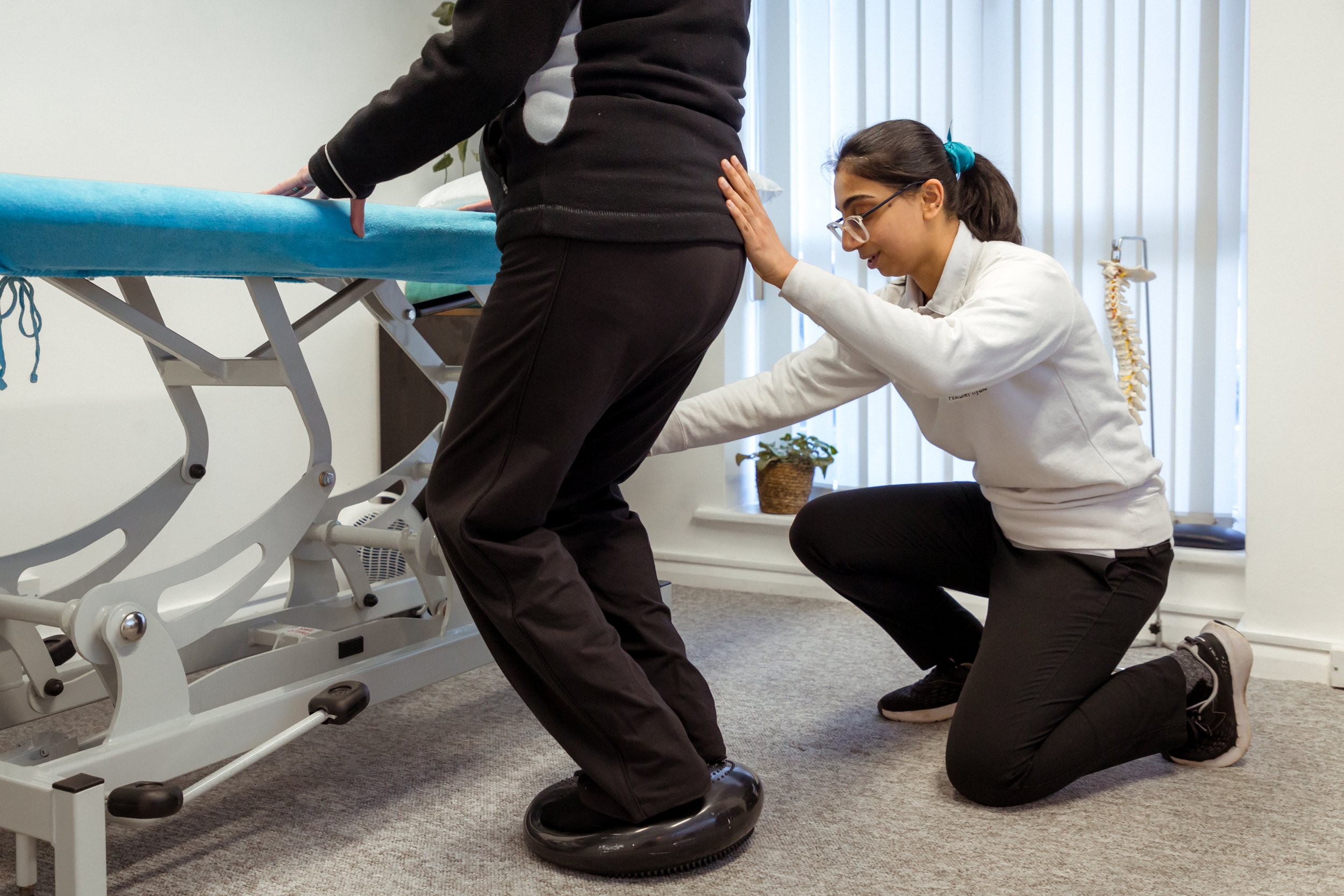Runner’s MOT
Whether you're training for your first 5K, chasing a marathon personal best, or navigating the ups and downs of ultrarunning, keeping your body in top condition is non-negotiable. Just like any high-performance machine, regular checks can help you perform better - and avoid costly breakdowns. That’s where a Runner’s MOT comes in.
What is a Runner’s MOT?
Think of it as a full-body service - designed specifically for runners. A Runner’s MOT is a comprehensive, evidence-informed assessment carried out by a physiotherapist trained in running biomechanics and rehab.
It’s aimed at spotting inefficiencies, addressing weaknesses, and keeping you injury-free. This isn’t just for runners nursing an injury. It’s for anyone who wants to run stronger, longer, and smarter.
Why would you need a Runner’s MOT?
Most running injuries are preventable. Studies show around 75% of runners get injured each year. Causes? Often this comes down to training load issues, sub-optimal movement patterns, or undiagnosed strength deficits.
A Runner’s MOT helps catch these red flags early - before they cost you weeks of training.
Who’s it for?
Runners with persistent or repeat injuries
Beginners building up mileage safely
Post-op or post-injury runners
Triathletes, ultra, and trail runners managing terrain and volume
Anyone who wants to fine-tune form and performance
What’s included in a Runner’s MOT session?
1. Subjective Discussion
Your injury and training history
Running goals, terrain, footwear, cadence
Lifestyle factors and motivation
2. Musculoskeletal Screening
Calf strength (heel raises)
Core strength (side planks, bridges, Copenhagen holds)
Mobility (ankle/knee range of movement)
Functional control (lunges, step-downs, balance tests)
3. Shoe Assessment
Bring your current (and worn-out) trainers
We’ll check wear patterns, fit, heel drop, and more
Advice tailored to your running style
4. 2D Gait & Biomechanics Analysis
Running video (side + rear views)
Insights on stride length, cadence, foot strike, vertical bounce
Look for common patterns: overstriding, poor glute activation, weaver gait, etc.
5. Return-to-Running Tests
Hop tests, bridge/plank endurance
Compared against normative data to guide return or progression
Why is a Runner’s MOT worth it?
Reduce injury risk
Improve running efficiency
Tailor your training to your body
Replace guesswork with expert insight
Connect rehab with high-performance
This isn’t a quick fix - it’s a foundation for sustainable running. If you’re planning a race, managing a niggle, or simply want to run better, this is your next step.
Book Your Runner’s MOT with us today - we’d love to see you!


